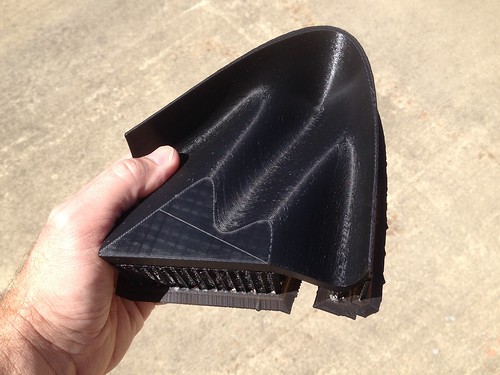Working on a new prototype, combining the models from 3D Printed Potential and Free Energy Surfaces for Teaching Fundamental Concepts in Physical Chemistry (Kaliakin, Zaari, and Varganov) and something like this:
Max Mahoney (Chemistry) printed one of the models from the aforementioned paper, and we got to discussing how we might fill it with sand and inject some energy in the system to motivate the sand to shift around to demonstrate concepts of chemical reaction kinetics and dynamics.
I found a Sonic Ghost VX-GH72 Electro-Mechanical Audio Transducer in the workshop. I purchased it some years ago hoping to replicate a sweet project I once saw at Maker Faire, developed by Sasha Leitman and involving 50 gallon metal drums with contact mics attached, with the drums acting as…well…drums, but also acting as speakers. Anyhow, we hooked the transducer up to a piece of metal and threw some sand from the aquaponics project on there, and played around with different frequencies.
We ended up breaking the transducer, and substituting a speaker, upon which we place the metal sign, with the model taped to the top.
We were able to get the sand to bounce out of the lowest spot and into one of the higher ones, so the rough prototype is showing promise…




3D Printed Potential and Free Energy Surfaces https://t.co/L15bGWvmKY #makered #3dprinting
Pingback: Failing at 3D Printing – FLC Innovation